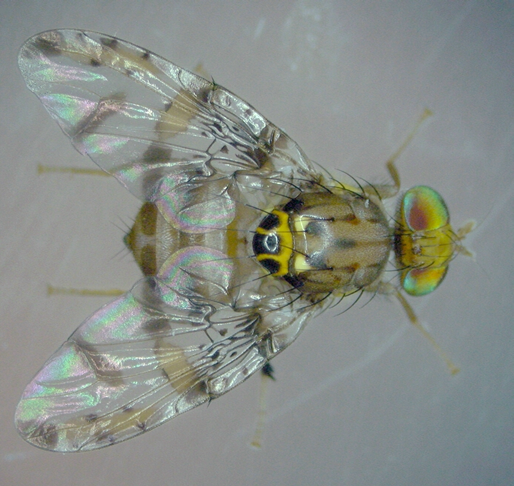22 July 2016 | By John Terblanche
How do we know if a pest insect is likely to become invasive and a threat in the future? When and where should we take action to prevent further invasion? These are just two of the questions that a team of C·I·B researchers tackled for the Natal fruit fly (Ceratitis rosa), which is a major agricultural pest in Africa.
A recent paper published in the high-profile international journal Molecular Ecology, led by C·I·B core team member Prof. John Terblanche and then-PhD student Minette Karsten (Department of Conservation Ecology and Entomology, Stellenbosch University), has warned of the looming threat of the lesser-known Natal Fruit Fly, Ceratitis rosa (Tephritidae) outside of its native range.
This is an interesting research question because the fly’s geographic range is currently restricted to south-eastern Africa, but it appears to have traits that may predispose it to being highly invasive.

Previous work has showed that, across Africa, the Natal fruit fly is genetically structured into two clusters (R1 and R2), with these two clusters occurring sympatrically (when they exist in the same geographic area and regularly encounter one another) in the north of South Africa. The spatial distribution of these genotypic clusters within South Africa was previously unexamined despite their importance for understanding the pest’s invasion potential.
In a paper by Karsten et al. hundreds of South African Natal fruit flies were collected, measured and genotyped to investigate patterns of population structure and determine connectedness of pest-occupied sites.
Surprisingly, the team was unable to detect any signals of differences between the populations. Furthermore, the fly populations were estimated to be extremely large, with only one morphological type (morphotype R2) within South Africa. The absence of the R1 morphotype at sites where it was previously found, may be a consequence of differences in thermal niches between the two morphotypes. A novel analysis of the genetics over long timescales also indicates the populations are presently expanding.
The results from this study suggest a high invasion potential of the Natal fruit fly unless there is urgent intervention and management action. Karsten explains, “The immediate implications of this research for management are two-fold. That area-wide pest management should be undertaken on a countrywide scale – a scale much larger than is typically the case. And that careful border control, including the process of fruit inspections, quarantine and interceptions, is critical for the prevention of further invasions.”
Full article by Karsten et al.
For more information, contact Prof John Terblanche by email jst@sun.ac.za


